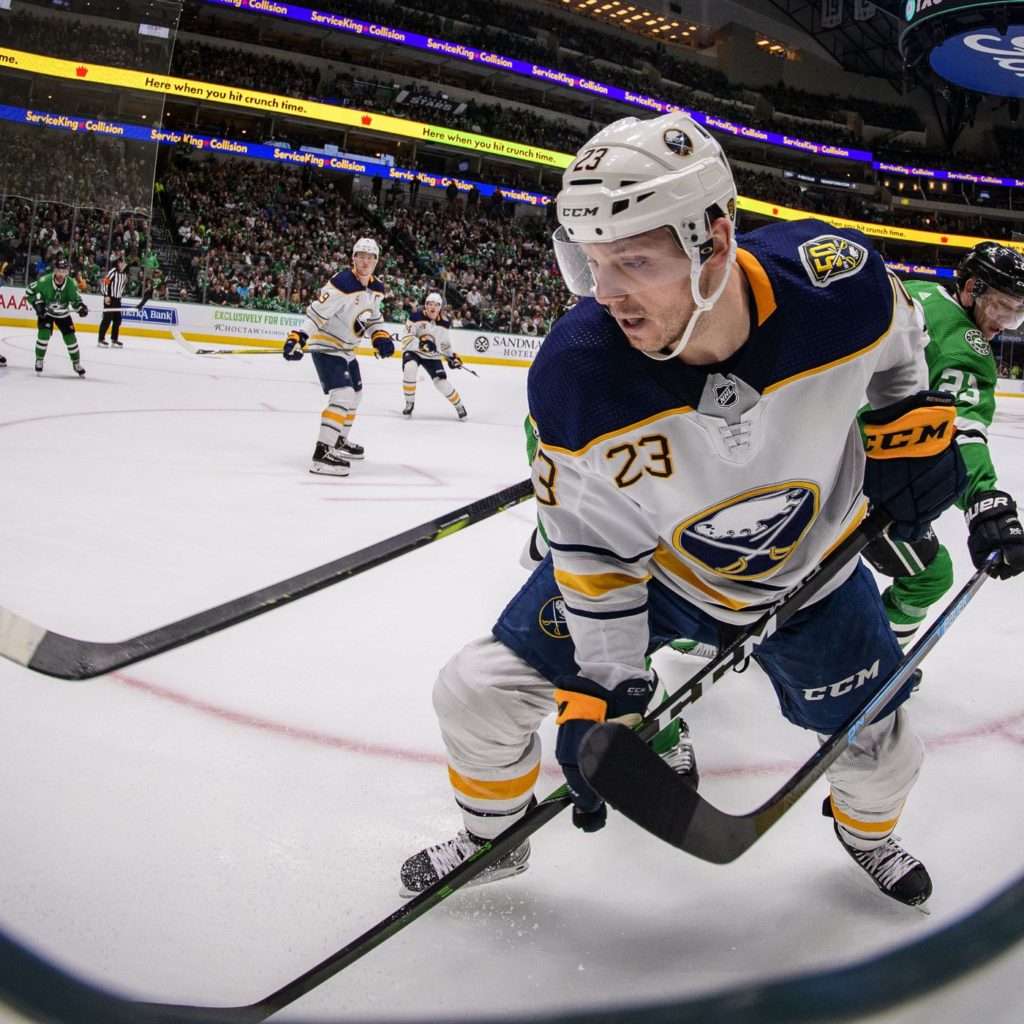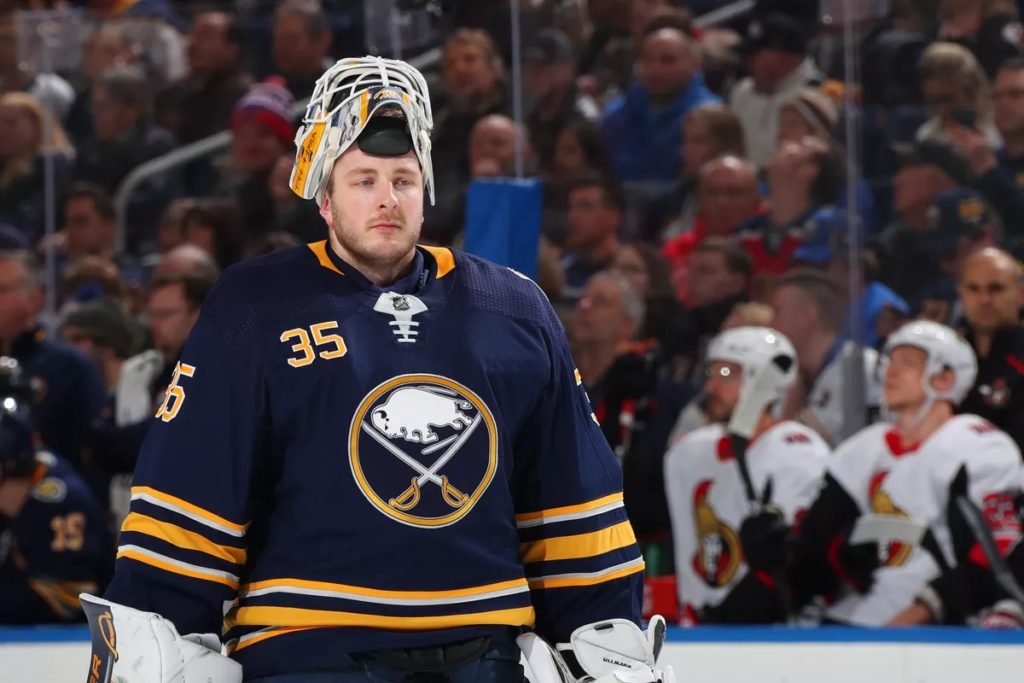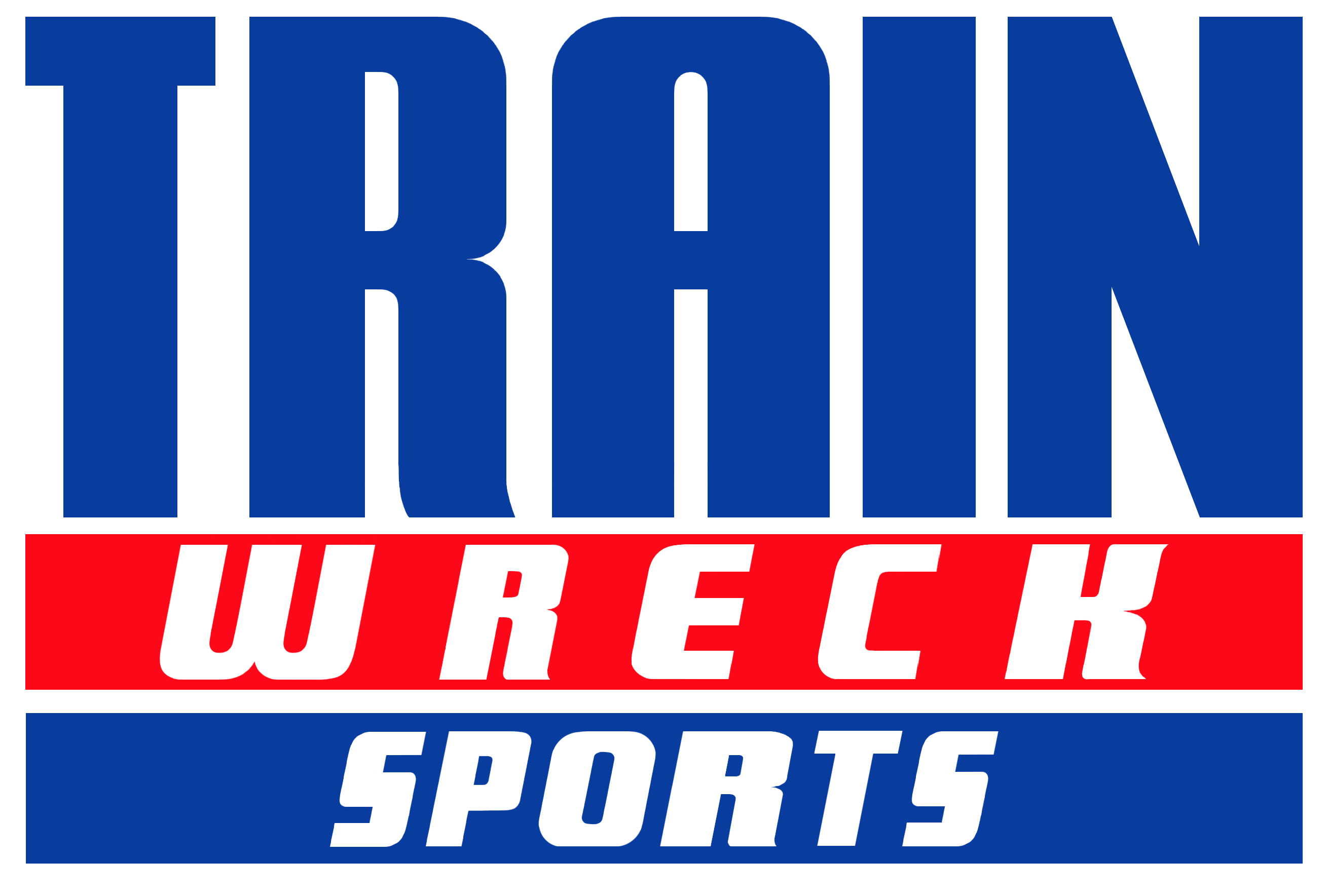
BY: DUANE STEINEL
As far as Sunday went, I think we can all agree it was a good day for Buffalo sports fans.
Before the Bills beat their division rivals, the New York Jets, my day started with waking up to the Sabres’ messages avoiding arbitration and signing Restricted Free Agent (RFA) winger Sam Reinhart to a one year, $5.2 million deal. While most are upset with this deal, I’m a little indifferent.
We've signed center Sam Reinhart to a one-year contract worth $5.2 million.
— Buffalo Sabres (@BuffaloSabres) October 25, 2020
Details: https://t.co/MrQ6ToFGpI pic.twitter.com/8hpoFttbYi
Sure we would all love Sam to be here long term. We would have liked that done when he signed his two-year, $7.3 million bridge deal in 2018 under Jason Botterill’s regime, but that didn’t happen.
Bridge deals are pretty standard. One of the most notable bridge deals recently was signed by star center Brayden Point of the Tampa Bay Lighting. Coming off of a 92 point season in 2018, Point signed a three-year deal worth $20.5 million with an annual cap hit of $6.75 million. Due to the large contracts of Steven Stamkos, Nikita Kucherov, and Victor Hedman already on the books, the Lightning and Point agreed on a short-term deal. It was an excellent deal for Tampa.
The Center position is valued much higher in the NHL, and coming off the season he had, he knew his value. But he also knew what he could make after this deal. He will be in line for a dramatic pay raise, especially after his performance in Tampa’s run to winning the Stanley Cup (33 points in 23 games). Not bad for a third-round pick.
When it comes to Sam Reinhart, $5.2 million a year is a very fair deal for both sides. According to Spotrac.com, Sam’s calculated market value is $6.2 million per year. His market value is comparable to Yanni Gourde, J.T. Miller, William Nylander, and Kevin Hayes. I think it is worth noting here that all comparables play center.
While Sam Reinhart is listed as a center by most sites, we here in Buffalo know he’s played almost exclusively on the right side of Jack Eichel for a few years now. Just two seasons ago, Reinhart had a career-high 65 points as a top-line member with Eichel and Jeff Skinner on the opposite wing. That year Skinner finished with a career-high in goals at 40. Sam was on pace to fall just short of that high this past season with rising star Victor Olofsson playing on his opposite wing.
Sam Reinhart scores on the PP on a nice deflection 2-1 #sabres pic.twitter.com/lVf3t98vTy
— Buffalo Hockey moments (@SabresPlays) September 26, 2019
We will analyze J.T. Miller, who also signed a two-year bridge deal with the New York Rangers in 2016 worth $5.5 million. After betting on himself, just like Sam had, he received a pay raise. After 43 and 56 point seasons, Miller was then dealt in a trade to Tampa Bay along with defenseman Ryan McDonough. Miller then signed a five-year deal worth $26.25 million but was traded to Vancouver to free up Tampa Bay’s cap space. He had a breakout year with the Canucks and scored 72 points with up-and-coming star Elias Petterson on his wing.
Don’t get me wrong. Sam Reinhart is a great piece, and he’s slowly improved over the years. We all know how great his hockey IQ is. His ability to play in front of the net and analytics shows he can drive his own line. But we have only gotten small sample sizes of that.
On a team that’s been desperate for scoring outside of its top line, last year, we were forced to have a newly resigned Jeff Skinner to play on the second and sometimes even third line in an attempt to spread out talent on a talentless roster. He played alongside Marcus Johansson, who played out of position for most of the season.
Johansson had a majority of his success playing on the wing before signing with Buffalo. Skinner’s play was so sloppy at times that we saw him stay on the bench in both overtime and during shootouts last season.
We repeatedly questioned why head coach Ralph Krueger had not reassembled the line from the previous season that saw Skinner score 40 goals. We also asked why we were setting him up to fail. But it all comes down to one thing and one thing only; If Sam can drive his own line, why isn’t he?
We all have heard Krueger speak at great length about the importance of analytics. He’s made a career out of it not just in hockey but also in professional soccer.
Here's the full answer from Ralph Krueger on analytics: "I think it’s just another tool in our kit today and one of the things in our box…on the sports science level and the analytics level at Southampton I’ve been able to learn many many things…(1/?)
— Chad DeDominicis (@CMDeDominicis) May 15, 2019
In 2014 Southhampton FC of the English Premier League hired Krueger as a director of the football club. Later that year, the team named him Chairman of the football club. So obviously, he sees things that we don’t. If Sam best serves the team playing on Eichel’s right side, then I’ll assume we should trust that judgment, which is why I have trouble opening up the checkbook on a long term deal for Sam. Especially right now, in a flat cap season and uncertainty with the cap going forward.
Had he been willing to sign for $6 million per year in 2018, knowing what we do now, I’d say they should have signed him. But the factors we don’t know are:
1. Did his agent advise him to wait to sign a bridge deal and get paid more later just like J.T. Miller did?
2. Where did the Sabres value him at? Or Sam and his agent?
3. After coming off his first 50 point season, was it a smart move to sign him to that lucrative deal at the time?
I remember many of us being happy with the “prove it” deal Sam signed that had a meager cap hit. And I am just as excited about this one.
With the addition of Taylor Hall on a one-year deal and Reinhart, the Sabres can now evaluate the situation at the end of this upcoming season and still have Reinhart’s rights as he will be an RFA. If the Sabres make the playoffs for the first time since 2011, will it be because of the emergence of Jack Eichel truly performing as an undisputed MVP of the league while having a bonafide star in Taylor Hall on his left side?
Rough night for Buffalo sports, so here’s a clip of Taylor Hall scoring a goal. pic.twitter.com/ZEtdnDpir2
— Lance Lysowski (@LLysowski) October 20, 2020
Will Hall want to resign here? These are questions we as fans will ask, of course, throughout the year and at its end. Also, what will the world be like? Will Covid-19 still be affecting the world of sports the way it has. Forcing yet another season where the cap not only doesn’t go up but maybe even goes down?
That could handicap the Sabres when attempting to re-sign Rasmus Dahlin to a long term deal. So for all things considered, I believe this was the right move.
Of course, the day didn’t end with just the Reinhart signing. Later in the evening, the team announced that it had reached a deal with goaltender Linus Ullmark. Once again avoiding arbitration, he signed a one year deal worth 2.6 million. We learned a few days prior, per Elliotte Friedman, that both the Sabres and Ullmarks camp were far apart in numbers.

The Sabres valued Ullmark at $1.8 million, whereas Ullmark and his agent had him at $4.1 million. It is the art of the arbitration game. A Team low balls the player, and the player/agent overvalues. It is a perfect number for both sides. Ullmark gets a pay raise and the ability to prove he’s worth more and build off a strong season this past year. And the Sabres don’t have to pay their starting goalie too much money in a difficult situation with a flat salary cap.
Even though I’ve played and coached the position for most of my life, I don’t believe it’s smart to pay a lot of money for a goalie. We’ve seen how badly that’s worked for teams like Montreal and Florida. The Canadiens are paying Carey Price an average of $10 million per year, and Florida is cutting a check to Sergei Bobrovsky for $10 million per. It handcuffs your team in terms of spending money in other areas. It’s has been proven, repeatedly, that you don’t need an elite goaltender to win Stanley Cups.
Chicago won three with Corey Crawford and Antti Niemi. Pittsburgh two with now Ottawa Senator goalie Matt Murray. The Penguins didn’t value him very highly and left the net in the hands of emerging Tristan Jarry.
The key is to build a team in front of your netminder. Pittsburgh, Chicago and Colorado have drawn up the blueprint for that.
With all of that being said, Ullmark impressed me last season. Coming off a season where he struggled to stay consistent, Linus improved mightily. In 2018-2019, Ullmark was frequently caught out of position, struggled with his skating, and relied more on his size rather than proper positioning, anticipation, and footwork to make saves at times.
Linus Ullmark stops Malkin point blank #sabres #pens pic.twitter.com/Lpc7Lpicjs
— Buffalo Hockey moments (@SabresPlays) March 2, 2019
After finishing just one game above .500 and a .311 goals-against average, Ullmark went to work in the offseason with goalie coach Mike Bales. And the goalie we saw this past year was vastly different. I saw a goalie who was in position more—played with calm feet. Had better mobility and read the play in front of him more effectively.
He backstopped a team that STRUGGLED defensively. Last season, he finished with a 17-14 record and improved with a 2.69 GAA and a .915 save percentage. He improved upon his .905 save percentage from the previous year. Had he not suffered a mid-season injury, leaving the net for a struggling Carter Hutton, the Sabres might have been in a position not just for the play-in-round but possibly even a playoff spot.
While I believe the Sabres should sign or trade for a decent back-up, I’m okay giving Ullmark his shot to be the workhorse for the Sabres next season at that price tag and term. Suppose the Sabres become a better puck possession team next season, which they should with the addition of Taylor Hall and having more depth at the center position. In that case, I don’t see why Linus won’t take more steps further to becoming a great starting goaltender.
If that is the case, I will have zero issues this time next season, signing him to a long-term deal.
With both of these signings taking place on Sunday, the Sabres now shift their focus to RFA Victor Olofsson:
- Where do we value him?
After a breakout rookie campaign shortened by an injury, Olofsson scored 22 goals and totaled 42 points in just 54 games while playing on Jack’s left side.
The former 7th round pick will be due for a big pay raise from his entry-level contract, and I wouldn’t be surprised if it’s in the $3.5-$4.5 million range. The Chicago Blackhawks just signed winger Dominik Kubalik to a similar deal for $3.7 million over two years. He scored 30 goals and 46 points this past season in 68 games.
I’d probably expect Olofsson to come in a little higher.
What are your thoughts, Sabresland? I’ll hang up and listen.
The sports desk can be reached at editorialtrainwrecksports@gmail.com

2 Responses